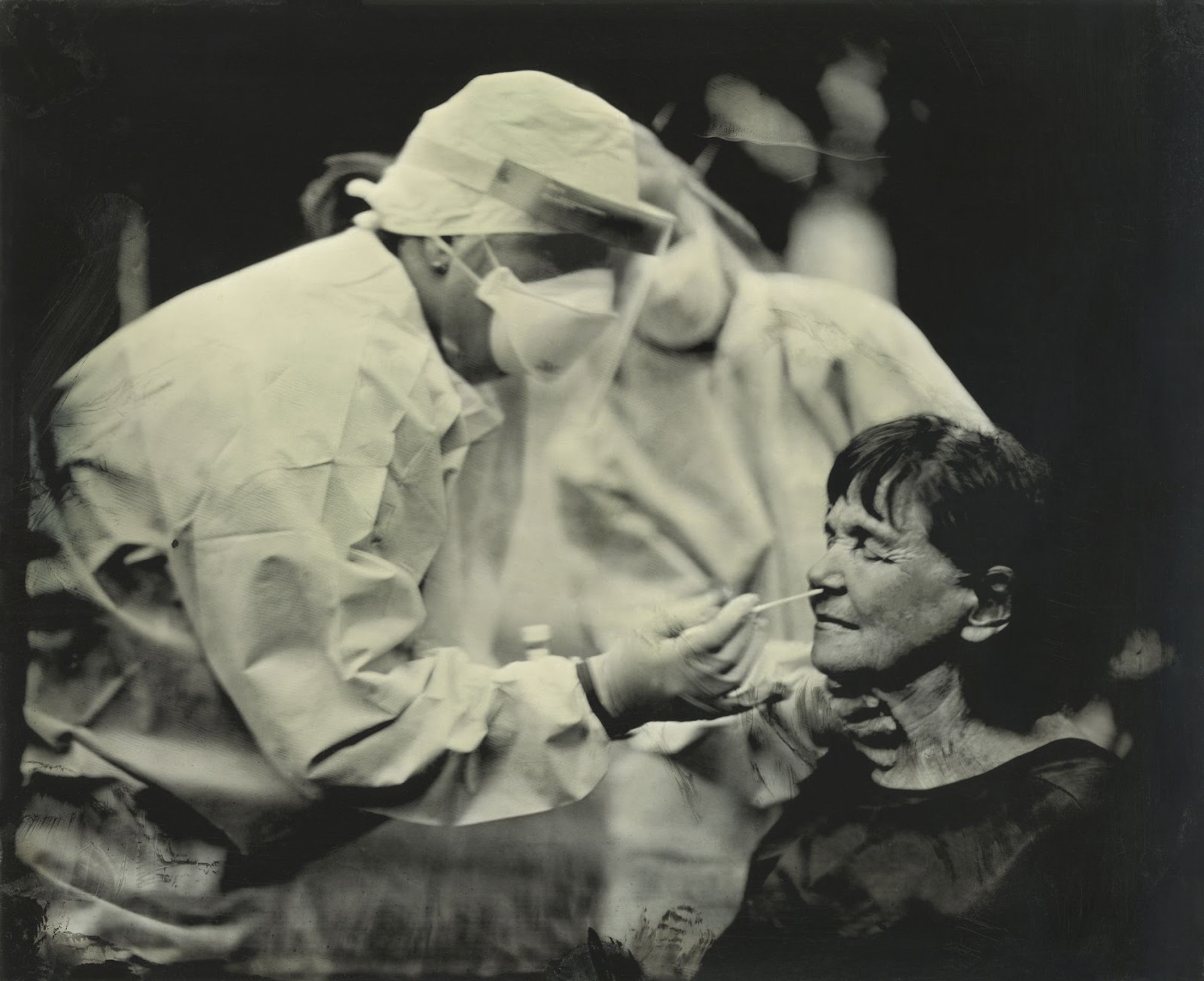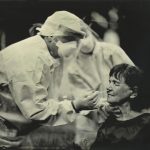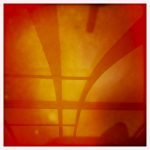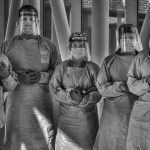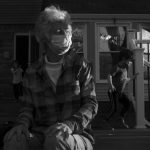Photo by Bill Steber
TEXT AND PHOTOS BY JOON POWELL, JOHN PARTIPILO, DAWN MAJORS, AND BILL STEBER
Illustrating their divergent perspectives and practices, four photographers from Nashville, Tennessee, USA, each with a solid foundation in newspapers, have prepared a pandemic-era exhibit that is slated to be presented next year at Vanderbilt University and the Scarritt Bennett Center in Nashville. In the months leading up to the exhibit we’ll feature their work in an ongoing Anthrow Circus series.
Just as the coronavirus pandemic endures, so does this project, since the photographers will continue adding new images to their combined body of work for the exhibit, creating a time-lapse of pandemic life. Their project celebrates the work of each contributor, with an eye towards the cohesive whole. Viewing these images together offers a unique experience, as their disparate subject matter and styles work together to tell the pandemic story. We hope the series will be relatable to a wide audience while it explores themes of isolation and connection, parenting, illness, and more.
Each grouping of photographs exemplifies four photographers’ individual approaches and perspectives. From Joon’s very small world of being quarantined with her children, to John’s regional specificity that is true to traditional newspaper standards, to Dawn’s colorful and symbolic cell phone imagery, to Bill’s wet plates showing medical professionals on the frontlines of testing, this ongoing series offers a small tour through photographic techniques and styles. The collection also illustrates the breadth of ways people experience and will ultimately remember this pandemic. Each image is identifiably topical to the pandemic, while also being terrifically different from the others.
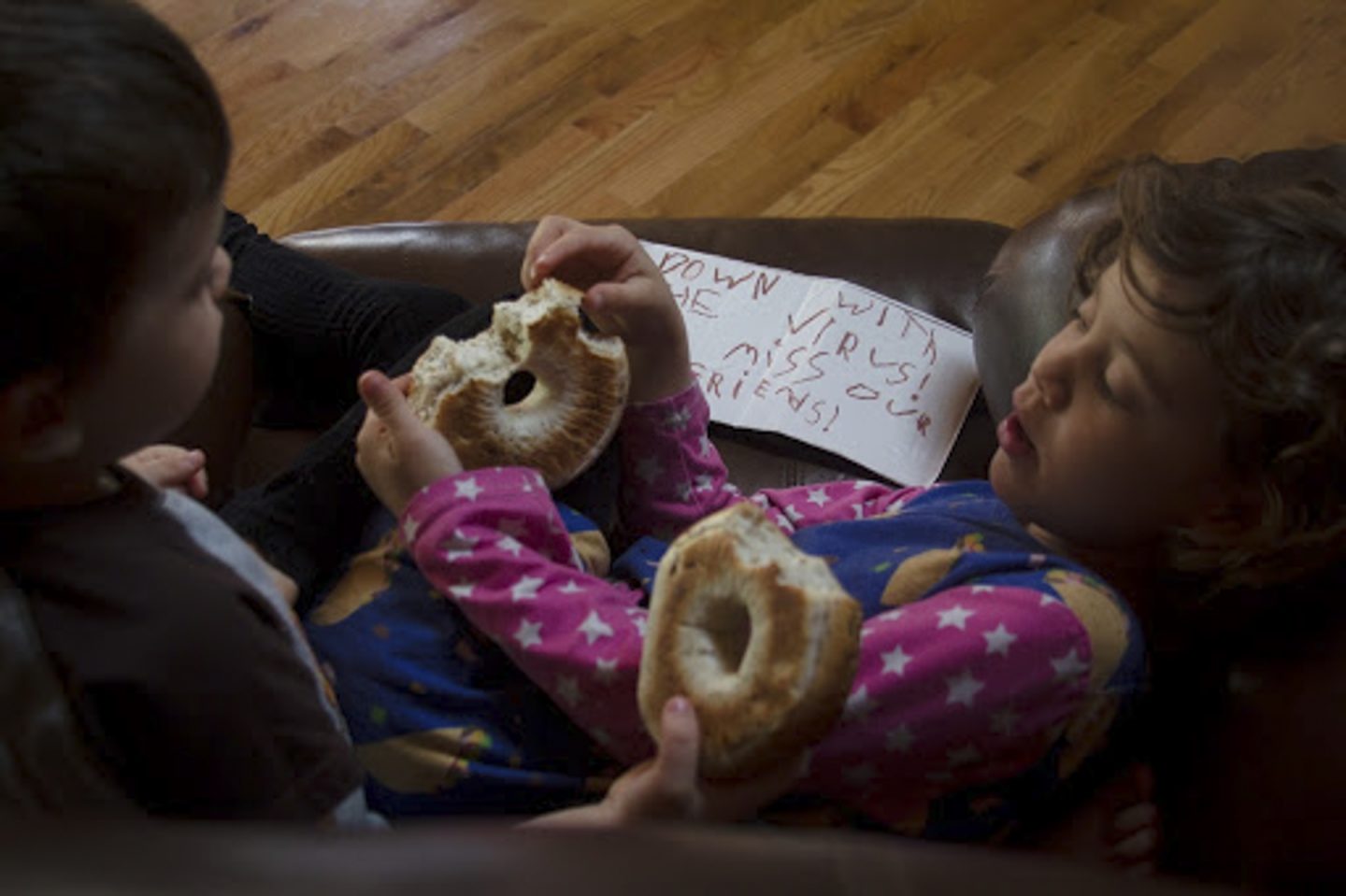
Joon Powell and her husband talk often with their children about what is happening in the world, and like their parents, the children want to be involved. With knowledge of the many protests in downtown Nashville, the kids wanted to have a march at their house. Emmet’s sign said “Black Lives Matter.” Ila’s sign says “Down With the Virus! We Miss Our Friends!” Notes Joon, “I’m so glad they have each other to play with. I know they would be so lonely if they didn’t.”
Joon Powell wields both a digital SLR and a 4×5 film camera to show her family’s isolation during the 2020 pandemic. Drawing from the tradition of Emmet Gowin or Sally Mann, Powell documents her family, often using a series of diptychs to deepen the images’ meaning.
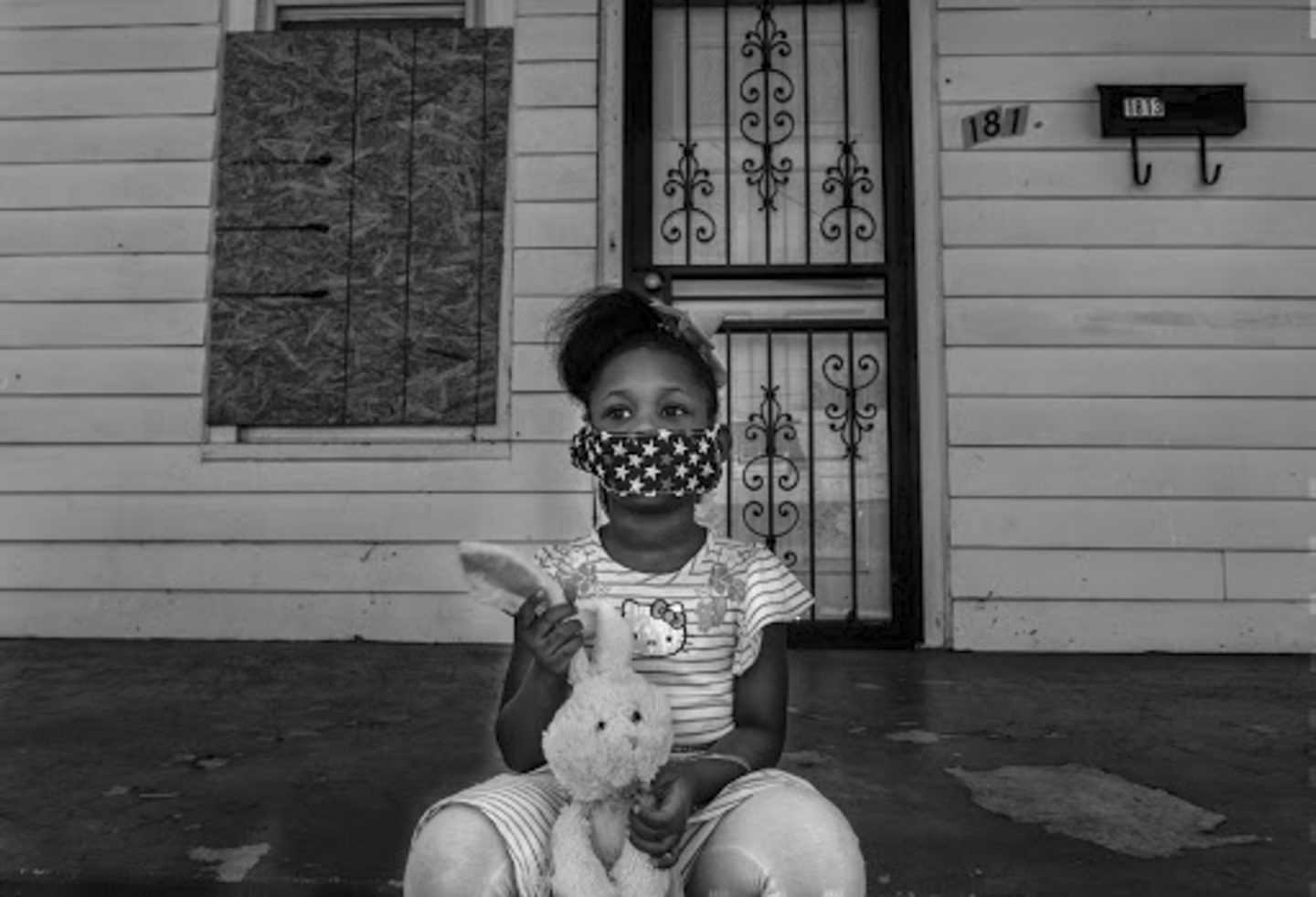
A small but deadly tornado hit North Nashville on March 2, 2020. Shortly after that the COVID-19 pandemic began. Since then, First Community Christian Church in North Nashville has been feeding the North Nashville neighborhood every week. Masked up as she waits for that day’s food drive to begin, London Moore, 6, sits on the steps of one of the church homes that was damaged. This photograph simply represents hope even through a deadly pandemic and a devastating economic crisis.
Veteran newspaper photographer and photography instructor John Partipilo encapsulates Nashville’s diverse population with the observant and patient eye of a painter. His photographs of Nashvillians as they experience isolation, protest, sickness, and more lay bare the experience of many southern Americans at this unique historical moment.
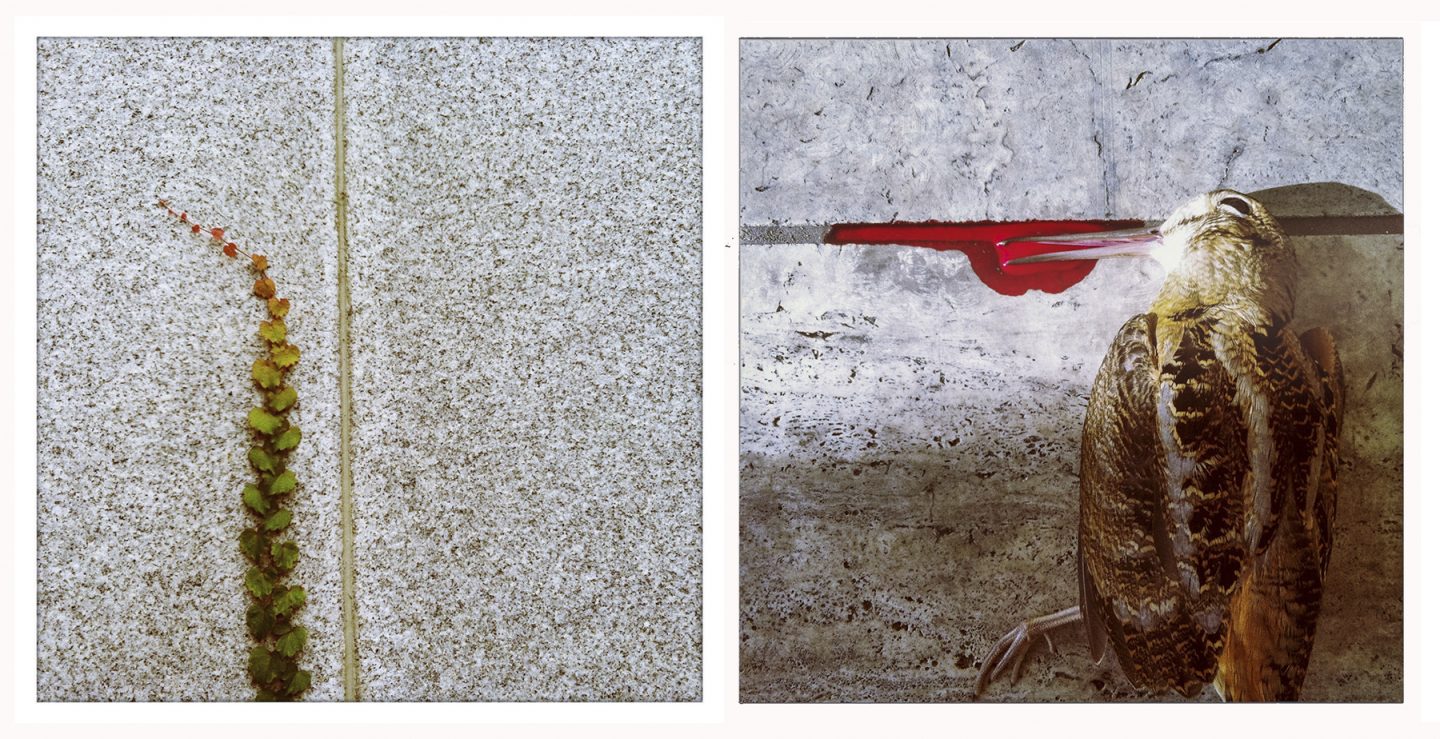
Dawn Majors chose these two images to illustrate the intersection of life and death that has been resonating with her more during her time in quarantine. There’s a kind of order and simplicity to the pairing that oddly enough gives it complexity. In a type of ironic twist, they are both beginnings and endings with vibrant splashes of color on a muted canvas. While most would look away from the dying bird but would enjoy staring at the dying vine, Dawn wants to see it all. What she loves about the natural world is that it’s just designed to work given the right elements are present, and when it does it’s simply beautiful in all its aspects.
Dawn Majors’ photos are a quiet exploration of the intersection of nature and humanity’s odd creations, with a gentle affirmation of her own identity. At once painterly and specific, macabre and whimsical, Majors’ full-on embrace of her cell phone as a tool shows a jaunty appreciation for pedestrian discoveries with an escapist appeal. Though the photos for this project were taken before the pandemic, the edits are being made during the pandemic, which informs her choices.
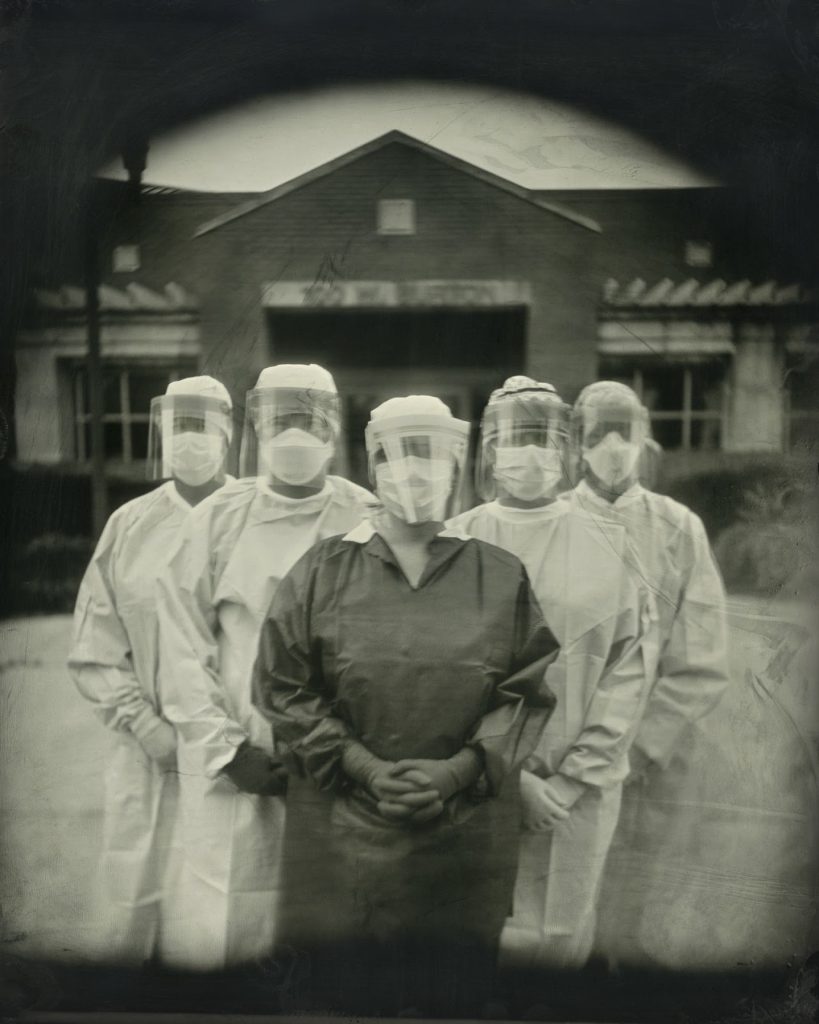
Frontline health care workers stand in front of the Rutherford County Health Department building after another long day conducting COVID-19 tests in the parking lot. Putting their own health and safety on the line in an effort to protect the public, Tennessee health care providers have conducted millions of free tests since the start of the pandemic, identifying several hundred thousand positive cases. Using a 120-year-old camera and lens, Bill Steber chose to photograph these workers on an 8×10 tintype employing the wet plate collodion process, which dates to 1851. The labor-intensive nature of the process and long exposure times force both the subject and photographer to slow down and become more deliberate in the creation of the image. Due the historic and unprecedented times in which we are living, Bill wanted to reach back to the past and use a 19th-century photo process to connect our current time with past crises.
Bill Steber’s larger body of work documents blues music and the American South using antiquated photographic processes. A tenured portraitist, Steber’s work is informed by a lifetime of visual storytelling paired with an extensive knowledge of music and the history of photography. The specific pandemic portraits created for this project utilize a wet plate process, which gives the images a haunting, timeless quality.
Follow the full Anthrow Circus series from these photographers here.

